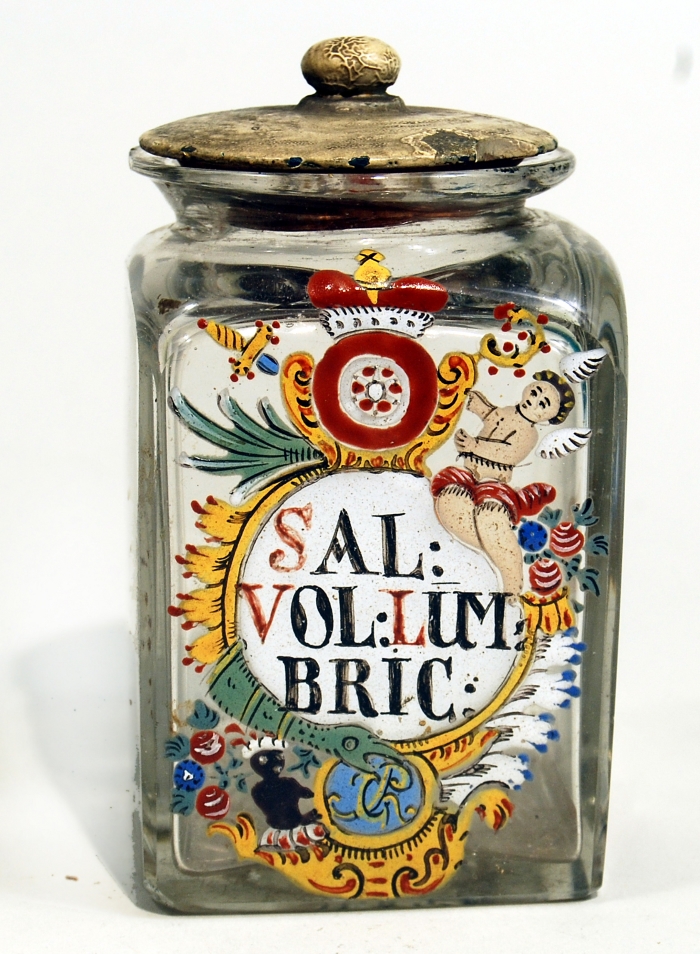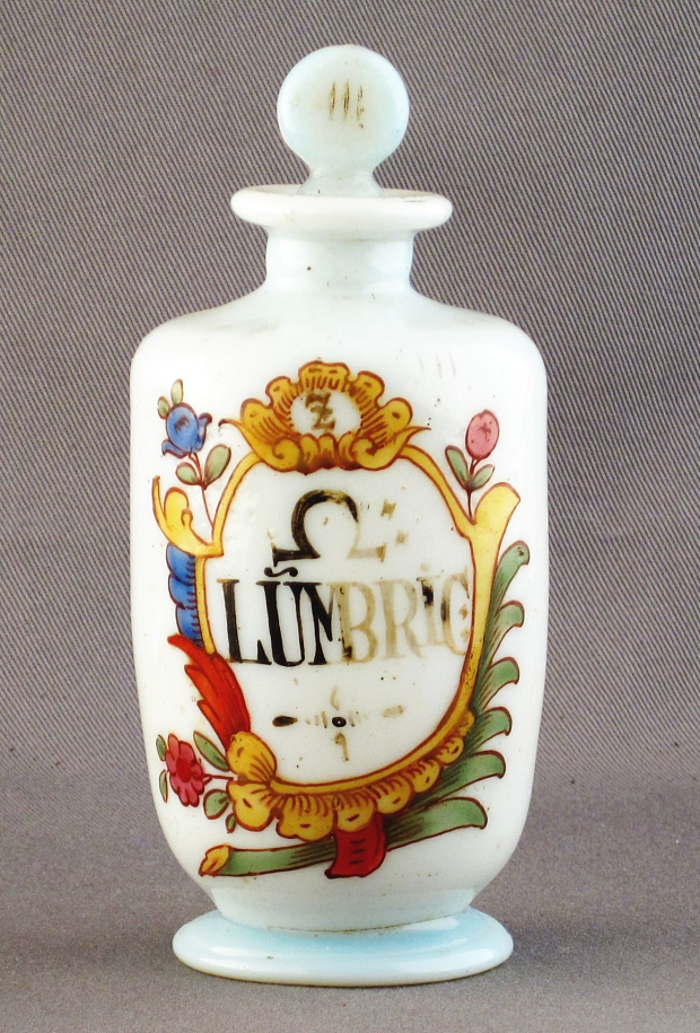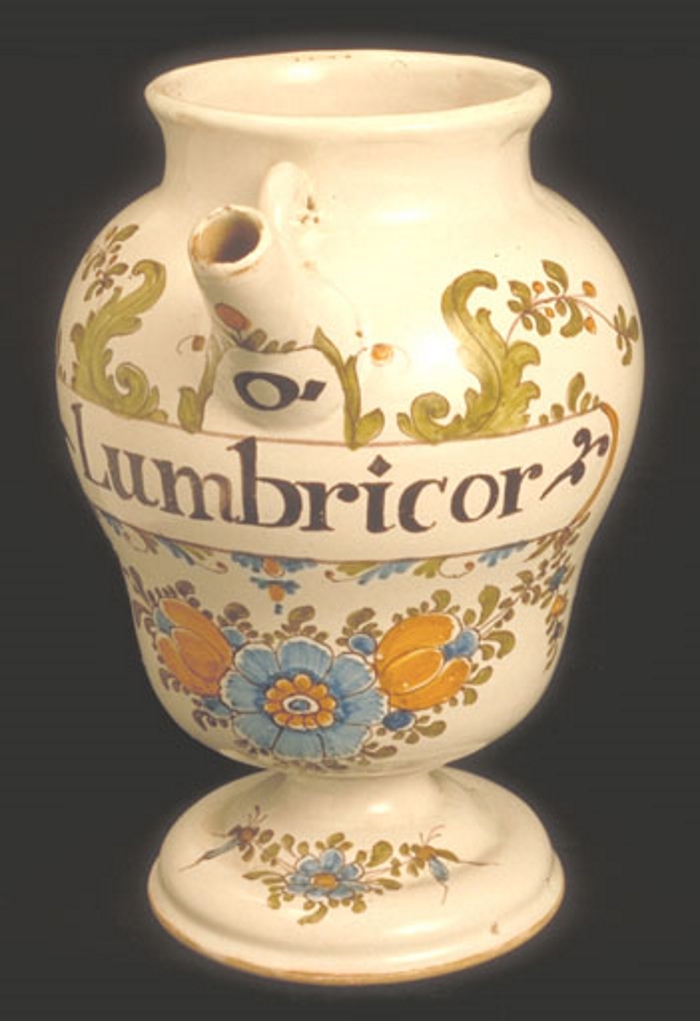

Today, I’ve got just the thing you’ve always wanted: a collection of bespoke containers for holding all the earthworm syrup you have laying around!
From the 16th to 19th centuries, the oil of earthworms was a popular treatment for a wide variety of ailments, from arthritis to gunshot wounds. This foul-sounding tonic was brewed up by apothecaries across Europe, who would store it in these fancy syrup jars.
Each jar has a shortened version of the words OLEUM LUMBRICORUM — Latin for ‘oil of earthworms’ — painted boldly on the front. This labeling was important so the apothecary didn’t mix up your treatment with, say, the oil of puppy dogs or the oil of sperm whale heads (both real things!).
What’s that? You’re fresh out of earthworm oil? No worries, scroll down to read some authentic recipes for making your own earthworm oil, and see more examples of these strange and fascinating worm syrup jars.


A Renaissance earthworm oil recipe
One of oldest recipe for earthworm oil that I’ve found was written by a French apothecary named Jean Liebault (1535-1596) in the late 16th century:
Take a half measure of earthworms, wash them diligently in white wine, then cook them in two measures of olive oil and a bit of red wine. When the wine is consumed, pour off and squeeze out the entirety and save the oil. It would be even better to put other worms in this oil and leave them there as long as the oil lasts.
Liebault recommends using the oil for joint paint and “comforting cold nerves.” Perfect for filling up all these earthworm syrup jars!
(Recipe was translated by Julianne Douglas, of the great blog Writing the Renaissance.)

Worms and puppies for gunshot wounds
Got a gunshot wound that won’t heal? Ambroise Paré (1510-1590) has a disgusting solution for you.
Paré was a French barber-surgeon and one of the fathers of modern surgery, who spent much of his career in the military treating soldiers with devastating gunshot injuries. The standard treatment of his day was to cauterize gunshot wounds with boiling oil mixed with treacle — which was both excruciatingly painful and largely ineffective. Paré became convinced there must be a better way.
After some moderately successful experiments treating gunshot wounds with a gentle liniment after surgery, Paré went in search for the perfect recipe for a healing balm. In the end, he spent over two years wooing a master surgeon in Turin, Italy, just to procure his top-secret worm syrup recipe:
Boil in oil of lilies, young whelps just born and earthworms. Prepare with Venetian turpentine.
(Whelps = puppies. Yikes.) Paré would apply the worm and puppy oil to the gunshot wound as a balm, with the hopes of providing pain relief while preventing gangrene and infection.

Crispy worms with a warning
Recipes for earthworm oil still appear in pharmacology texts through the 18th and 19th centuries, but some apothecaries began to grow dubious about this strange tonic.
For instance, in 1719 English medical writer John Quincy included this earthworm oil recipe in his writings on pharmacopoeia:
Take earth-worms well cleansed (1/2 pound); olive oil (2 pounds); white wine (1/2/ pound). Boil together until the wine is evaporated, and the worms become crispy, then strain out the oil for use.
Quincy notes that the oil is recommended as pain-relief for penetrating pain, such as arthritis, palsies, rickets and old age cramps. However, he warns: “They who trust too much to it…will be disappointed.”
Oh well — I guess we’ll just have to enjoy these strange earthworm syrup jars for their aesthetic beauty, rather than their medical usefulness! And the next time I have an ache, I will gaze upon my bottle of acetaminophen with a new sense of appreciation, grateful that I don’t have to take a slimy dose of worm syrup.



For more strange delights, please subscribe to The Museum of Ridiculously Interesting Things below, or follow me on Instagram or Facebook! I promise to make your life a little bit weirder.

But why has no one addressed the obvious question on the first two earthworm syrup recipes – what exactly is a measure of earthworms that we may know what a half-measure is? Are earthworms measured by the foot or by volume? And is the proper collective noun for a measure of earthworms a wriggle, a squirm or a squeamish?
Pingback: Earthworm Syrup Jars – wackynewstories.info
Pingback: Earthworm Syrup Jars
Pingback: Earthworm Syrup Jars – Newsnaut
This site, and the author never ceases to amaze me. Just when you think you’ve heard it all, you realise you hadn’t. When – not if – you get to open the B & M version of this blog, please sign me up for a lifetime pass: anything less would mean I have to rush…
That’s gross I love it.
Aubrey – Perfect comment for you. I concur.